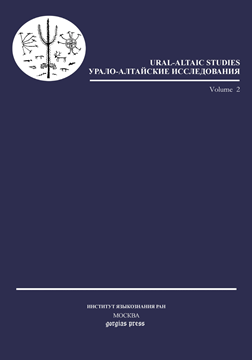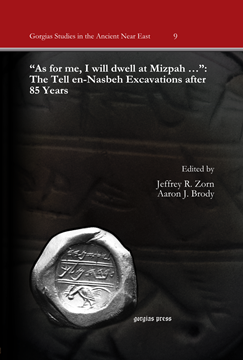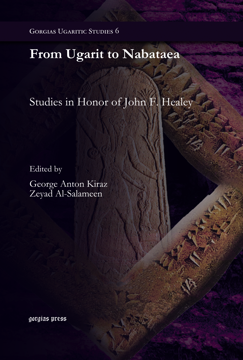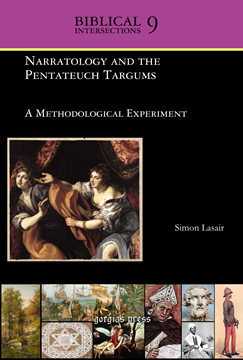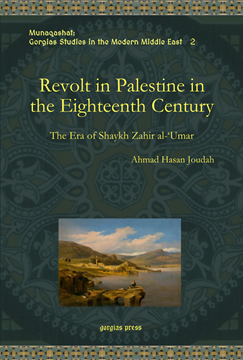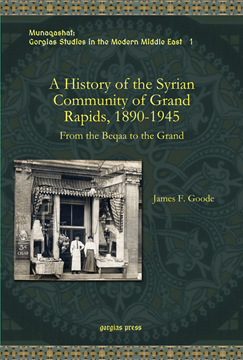Ural Altaic Studies 2 (5) 2011
Series: Ural-Altaic Studies 5
ISBN: 978-1-4632-0168-5
The journal "Ural-Altaic studies" is concerned with linguistic matters, connected with the Uralic and Altaic languages. It is bilingual; all papers are published in both Russian and English.
$64.00 (USD) $38.40 (USD)
Critical Reviews in the History of Science (Volume 7)
Edited by Alan C. Bowen & Tracey E. Rihll
Series: Aestimatio 7
ISBN: 978-1-4632-0175-3
Aestimatio provides critical, timely assessments of books published in the history of what was called science from antiquity to the early modern period in cultures ranging from Spain to India, and from Africa to northern Europe. The aim is to allow reviewers the opportunity to engage critically both the results of research in the history of science and how these results are obtained.
$182.00 (USD) $109.20 (USD)
The Tell en-Nasbeh Excavations after 85 Years
Edited by Jeffrey R. Zorn & Aaron J. Brody
Series: Gorgias Studies in the Ancient Near East 9
ISBN: 978-1-4632-0416-7
Collected essays on aspects of daily life at the Israelite site of Tell en-Nasbeh (biblical Mizpah of Benjamin). These include: trade and economy, death and burial, metals, cooking, water management, curation of the site’s materials, and a site bibliography.
$164.00 (USD) $98.40 (USD)
Journal of Language Relationship 7
Volume 7
Series: Journal of Language Relationship 7
ISBN: 978-1-4632-0178-4
The Journal of Language Relationship is an international periodical publication devoted to the issues of comparative linguistics and the history of the human language. The Journal contains articles written in English and Russian, as well as scientific reviews, discussions and reports from international linguistic conferences and seminars.
$72.00 (USD) $43.20 (USD)
Critical Reviews in the History of Science (Volume 8)
Edited by Alan C. Bowen & Tracey E. Rihll
Series: Aestimatio 8
ISBN: 978-1-4632-0179-1
Aestimatio provides critical, timely assessments of books published in the history of what was called science from antiquity to the early modern period in cultures ranging from Spain to India, and from Africa to northern Europe. The aim is to allow reviewers the opportunity to engage critically both the results of research in the history of science and how these results are obtained.
$179.00 (USD) $107.40 (USD)
From Ugarit to Nabataea
Studies in Honor of John F. Healey
Edited by George Anton Kiraz & Zeyad Al-Salameen
Series: Gorgias Ugaritic Studies 6
ISBN: 978-1-4632-0180-7
From Ugarit to Nabataea is a collection of articles on the texts and cultures of various Near and Middle Eastern societies such as Ugarit, Ancient North Arabia, Nabatea, Palmyra, Edessa, the monasteries of Mesopotamia, and modern day Syriac-speaking communities. They include discussion of the religious beliefs, iconography, epigraphy, architecture and language of these societies – fields to which John F. Healey has contributed in his long, distinguished and varied career.
$160.00 (USD) $96.00 (USD)
Narratology and the Pentateuch Targums
A Methodological Experiment
By Simon Lasair
Series: Biblical Intersections 9
ISBN: 978-1-61143-489-7
In this innovative book Simon Lasair explores some of the potentials of applying narratology to the Pentateuch Targums. Lasair argues that when the targums present coherent narratives, they largely carry the major structures of the Pentateuch over into an Aramaic context. This book calls for a wide ranging rethink of the methodologies used to study targumic literature, as well as how to place the targums within their original historical contexts.
$138.00 (USD) $82.80 (USD)
Revolt in Palestine in the Eighteenth Century
The Era of Shaykh Zahir al-‘Umar
ISBN: 978-1-4632-0002-2
In the turbulent atmosphere of the eighteenth century when the Ottoman Empire was enfeebled, local leaders far from Istanbul took matters into their own hands. At first, these leaders only regulated local trade and tax collection, but soon, leaders like Shaykh Zahir al-‘Umar — a district tax collector in Palestine— saw opportunities to amass great wealth and power while providing autonomous government and safer roads to their local followers. A gripping and fascinating read, Ahmad Joudah’s biography of Shaykh Zahir is crucial for scholars seeking to contextualize developments in modern Palestinian history within the politics of the late Ottoman Empire.
$178.00 (USD) $106.80 (USD)
A History of the Syrian Community of Grand Rapids, 1890-1945 (hardback)
From the Beqaa to the Grand
ISBN: 978-1-61719-028-5
This book provides the first history of the old Syrian community of Grand Rapids, Michigan, 1890-1945, focusing on the slow process of ethnic acculturation during which community members developed a hybrid culture. Unlike some Middle Eastern immigrant groups, these Syrians were able to maintain their identity by establishing their own churches, which still exist today. At every opportunity this group is situated within the larger historical context, the decline of the Ottoman Empire, the French Mandate in Syria, the Progressive Movement, the Americanization program of the 1920s, the Great Depression and the two world wars.
$163.00 (USD) $97.80 (USD)
1 Maccabees According to the Syriac Peshitta Version with English Translation
Series: Surath Kthob 13
ISBN: 978-1-4632-0585-0
This volume is part of a series of English translations of the Syriac Peshitta along with the Syriac text carried out by an international team of scholars.
$150.00 (USD) $90.00 (USD)
